What do you get when you take the insane cocktail of artistry and ligament-tearing terror that is figure skating and channel that story through the quintessentially eccentric and trope-glutted visual monster that is anime?
You either end up with something utterly mediocre, or you end up something that is brilliant to watch.
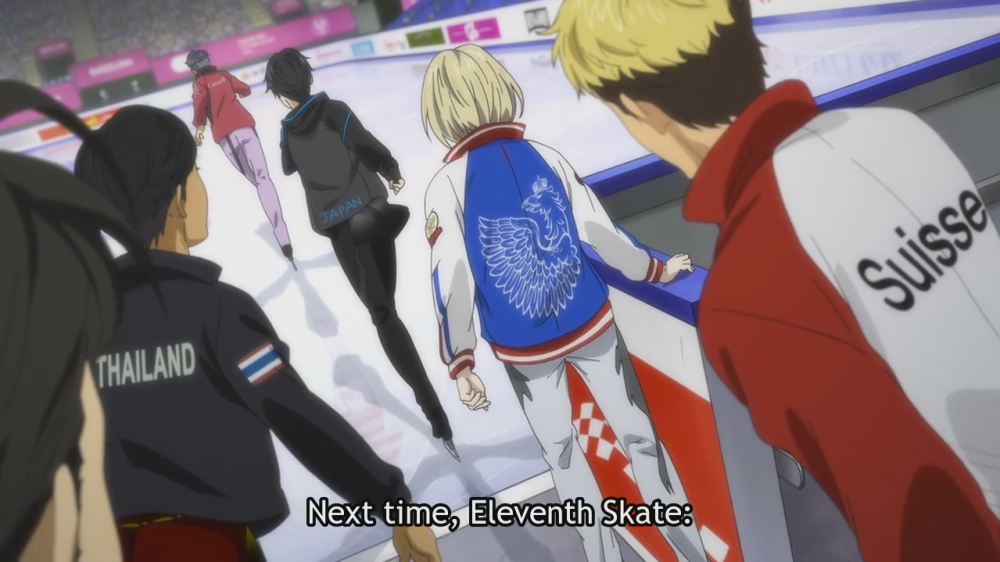
In what has been an excellent year for anime, Yuri on Ice is one such standout title, with stunning animation sequences and dynamically magnetic characters who will draw you in to the ice only to fall hard for them (and you won’t mind it one bit!). Yuri on Ice has been a special experience for me for all these reasons, but also for spurring my interest into competitive figure skating.
One of the reasons why I find anime so satisfying is in its sheer power as a medium for generating interest in niche activities and fandoms that are typically self-contained and isolated. Coverage seems to work particularly for showcasing competitive sports or performative activities, which lend themselves well to the typical popular tournament style storylines that are commercially successful. Consider Yumi Hotta’s Hikaru no Go, which rekindled international interest in the game of go, a game traditionally seen as an activity of the elderly rather than by children. Put a shounen twist with supernatural hijinks, intense rivalry character dynamics and an OST to die for and you can make board game genuinely exciting and accessible to viewers of all ages. More recent ommercially successful mainstream sports anime titles like Free!, Kuroko no Basket,and Haikyu! gave dramatic renditions of swimming, basketball and volleyball, respectively. None of these series have gotten quite the social media storm of clashing fandoms quite like Yuri on Ice.
When Fandoms Collide: Yuri on Ice Fans Receiving Hot and Cold Reception from Figure Skating Fans
Unlike other sports anime content to fully embrace the tropey sensibilities to spin a good story (a drop shot that wipes out the dinosaurs–sure why not? And while we’re at it, let’s throw in some awkward tango-esque moves precluding a two-part smash just for fun.), Yuri on Ice is rare in its commitment to a more realistic portrayal of a niche sport–can’t get more niche than men’s figure skating (except maybe curling)–both from a technical and emotional standpoint. While any figure skating fan will raise their eyebrows in disbelief at the notion of the absurdity of a 27-year-old man for having 5 Worlds championship and 5 Grand Prix Final titles under his belt, Yuri on Ice‘s competitive flair is more reasonably within the realm of possibility compared to other sports anime.
Like any other anime fan who fell madly for our fictional Japanese and Russian duo, at some point after Yuri’s riveting performance during the Cup of China arc (episodes 4-5), I got curious about how faithful YOI‘s representation of figure skating was to real life figure skating. Somehow, through happy chance, my first exposure to real life figure skating was this performance by Japan’s Yuzuru Hanyu in the 2015 Grand Prix Final–who would have thunk that real life figure skating would be more amazing than anime, which has creative license to stuff as many ridiculous quad jumps as it likes?
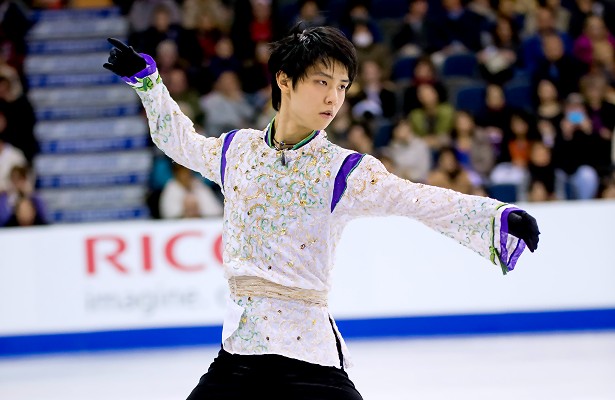
As a basic rule, one should never read the comments of a Youtube video. Seriously. The anonymity indiscriminately shelters all kinds of folk, and dishes out more helpings of honesty than you’ll ever want. How did figure skating fans react to the sudden influx of new figure skating fans greenhorned straight from anime fandom?
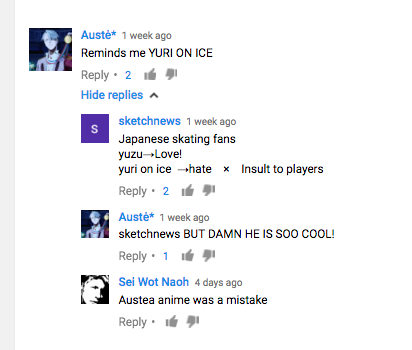
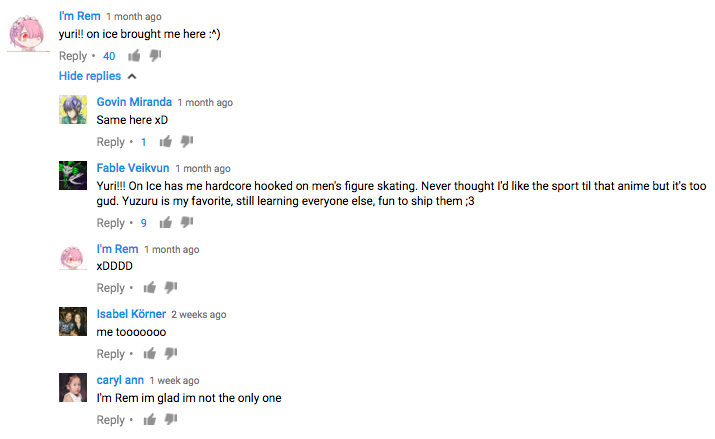
Sifting through these reactions made me realize: the power of fandom is potent across all fandoms and is especially strong in figure skating. Some figure skating fans seem to give the impression as defensive, deeply fanatical and quick to shut down any romantic notions a YOI fan might have about figure skating.
Other fans, more level-headed, though far from impassionate, receive the YOI fan immigration pattern with tepid reception and heavy skepticism. Unlike these weaboos jumping on the figure skating bandwagon for the latest fad, they’re the true veterans, the true fans, who have been following the sport long before it was considered “mainstream cool”. They attempt to articulate what is it about YOI fans that bothers them, which may include one or more of the following reasons:
- Perceived disrespect of the sacred nature of figure skating:
- Lack of knowledge regarding actual figure skating
- Anime representation of figure skating is not up to snuff.
- Discomfort with interfandom activities that feel invasive to their repertoire of what is considered acceptable fan behavior
These reasons speak to a level of discomfort that is related to Yuri on Ice‘s commitment to a realistic representation of figure skating. It’s funny to see feathers get ruffled because Yuri on Ice “fails” to be realistic enough.

The best kind of fans, in my humble opinion, are the open-minded ones who are able to rationally navigate across fandoms, recognizing Yuri on Ice for what it is–an anime made by a staff that deeply respects the spirit of figure-skating and creates a mesmerizing story that captures the essence of why figure skating continues to amaze and seduce its viewers. Yuri on Ice is powerful precisely because it echoes a world so much like the figure skating world that we know (or come to know). Whoever planned the timing for the series’ airing to coincide with the actual Grand Prix figure skating series was a genius. Frog-kun from Fantastic Memes and ajthefourth from atelier emily have already chimed in on how cleverly Yuri on Ice uses social media to add a particular mood or storytelling style to add depth to the YOI world. However, the presence of social media within YOI also forces a more active participatory mindset for the viewer. We see an Instagram photo or Vine posted by a character, for a moment, that line between fiction and reality blurs as we automatically make the connection to our own social media experiences (for those of us who routinely have any). Social media is powerful but ephemeral, as ajthefourth points out, so timing is EVERYTHING.

I’d argue that impeccable timing, combined with Yuri on Ice‘s commitment to a faithful adaptation of a figure skating world as close to ours, is the reason why it has been so successful with not just anime fans but figure skating fans (and figure skaters themselves!). Unlike your typical shonen sports anime, Yuri on Ice ditches the physics defying hijinks obviously inapplicable in real life in favor for a painstaking eye for detail to create choreography and fully fledged programs that may be a bit “showy” for actual competitive layout (and let’s not forget the inflated PCS and TES scores!) as well as characters that are complex, larger than life characters who fans can project their fannish sentiments onto.
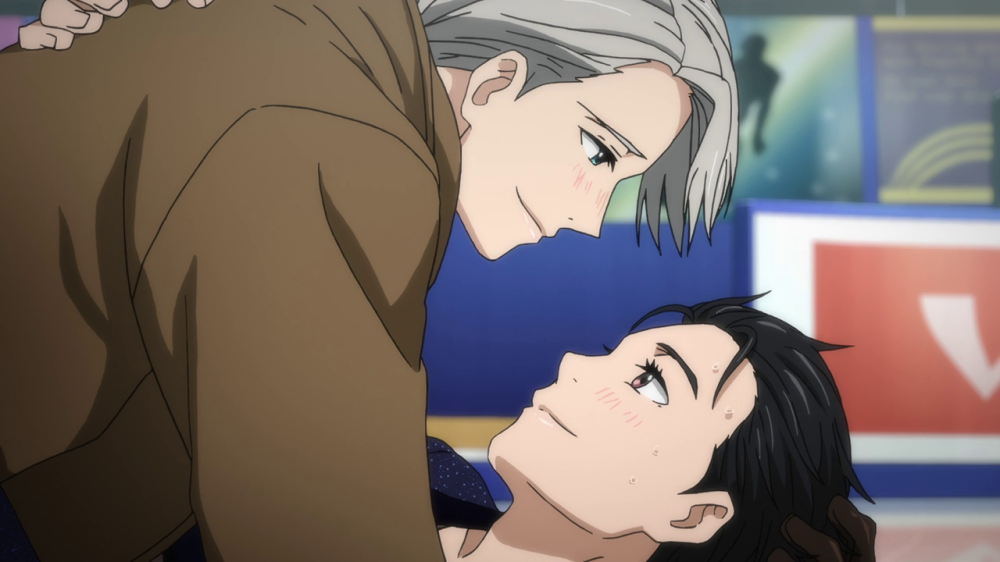
Characterization is especially huge for FS fans, because it is very integral to how FS fandoms work. Though most FS fans enjoy figure skating in general, most tend to be very emotionally involved with their favorite skaters, their love deep but selective, and tend to stay committed to their favorite skaters. Devoted fans usually follow their favorite skaters from the beginnings of their career to their height, a journey that can last for 5-7 years. This love comes easily as FS are actual people, with actual lives and are thus easy to empathize with. During the careers of their favorite skaters, FS fans cultivate intimate profiles of their skaters of choice and develop an emotional connection to those skaters by vicariously sharing in their triumphs, their defeats and in the glimpses of the private lives skaters choose (or don’t choose) to reveal. A plus for FS fans is that their love, unlike anime characters, does not stay one-sided. Most figure skaters (at least the well mannered ones) reciprocate by responding with gratitude for their fans’ support and fans get the rush from being acknowledged.
In contrast, anime fans’ love feels comparatively more pluralistic and transitory in nature. Character attachment also works differently since we recognize that anime characters are 2-D and not real. It’s a more distant, more abstract kind of affection. Given the average length of your typical running anime, fandom interest typically peaks during the season the anime is airing (so about 12 weeks) with interest leveling off or plunging back down (longer-running shows or sequels have more success in sustaining interest, but these are the exceptions rather than the rule). Looking back at 2016 (a great year for anime!), I’ve watched easily over 30 shows, but only a handful of those still resonate with me strongly. That isn’t to say that the anime watched was bad per se, but the emotional investment tends to be shorter lived. And unlike with figure skaters (or with live performers and athletes in general), anime characters, however much they may make our hearts pound, will never be able to react to their fans in real time.
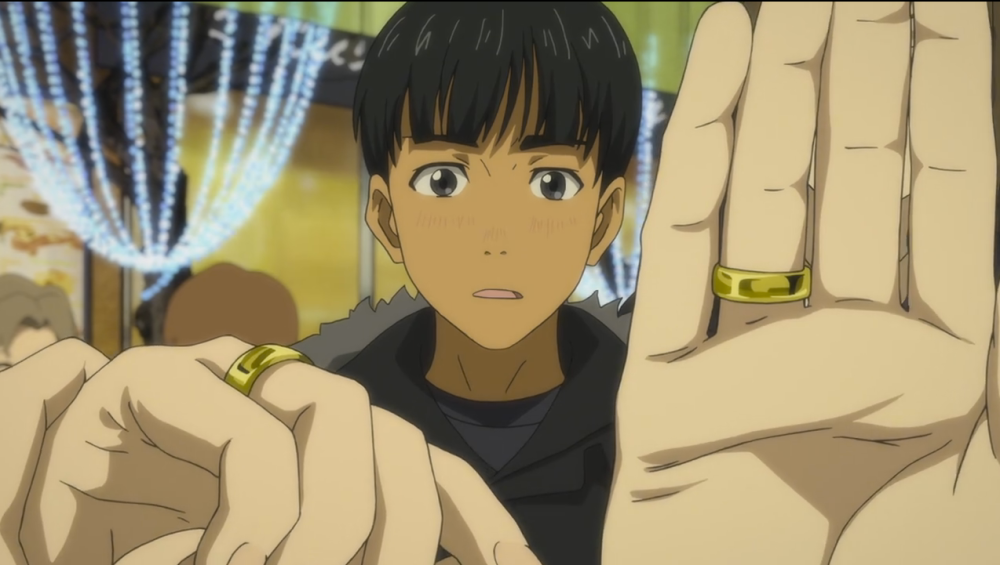
Yuri on Ice, is in many ways, a perfect marriage between two fandoms. You don’t have to be a figure skating fan to appreciate the sensual beauty of Yuri’s Eros short program. Likewise, you don’t have to be an anime fan to enjoy shipping Viktor and Yuri and the anime’s depiction of a healthy, unfetishized relationship between two men. Yet, I suspect the fans that will get the most enjoyment out of Yuri on Ice are the fans who are able to cross both fandoms. This week’s Yuri on Ice coincided with the Grand Prix Final opening day in Marseille, a timing that was capitalized perfectly. The camaraderie of the six men GP finalists on the eve before the competition in Yuri on Ice resonates doubly with figure skating fans who are also following the six real life world-class male figure skaters scheduled to duke it out on what may not be entirely stable ice in less than 24 hours (unlike in fiction, sources of skating drama are typically less theatrical and more mundane). Fans straddling both fandoms can’t help but draw the parallels, however outlandish they may be. Who hasn’t compared Yuri’s inconsistent skates to Yuzuru Hanyu’s godly–both spectacular and disastrous–performances, despite the fact that Yuri was actually inspired by another Japanese figure skater? And after watching today’s episode, who else is speculating on why GP banquets are never filmed? The fact that an anime is able to even generate these speculations and interfandom conversations is a remarkable feat in its own right.
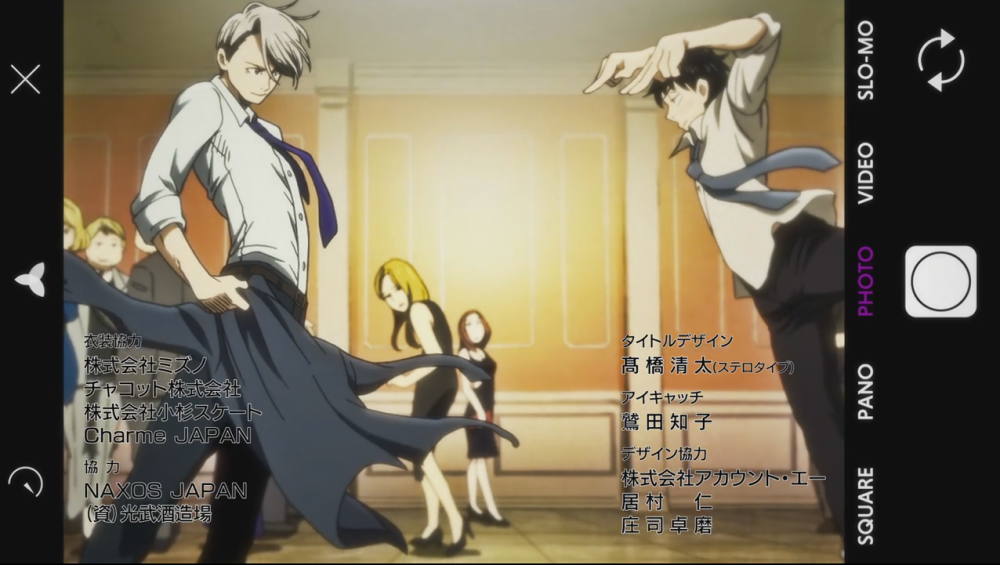
So who else is staying up for the GP Final countdown in Marseille? (I am!)
Nice to have you back!
LikeLike
Thank you! It’s great to be back.
LikeLike